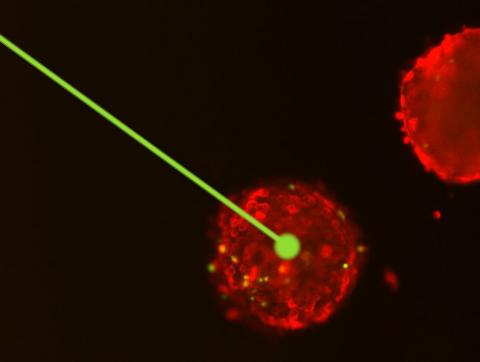Dr Harald Janovjak – the most recent addition to our Partner Laboratory Network – has been awarded a JDRF project grant for innovative work exploring light as a new strategy to treat type 1 diabetes (T1D).
The EMBL Australia Group Leader’s work is the first application of visible light treatment to the insulin-making beta cells that are destroyed in T1D.
It has long been known that chemicals and proteins that increase the proliferation and survival of these cells are effective at treating diabetes in animal models. But substantial hurdles exist for their therapeutic use, including that many other cells in the body may respond to those same chemicals, posing a risk of side effects, most importantly cancer.
Therefore, we need new ways of delivering these proliferative signals to beta cells more specifically.
 Inspired by findings in vision research – namely, that cells in the eye respond to visible light with increased survival – Dr Janovjak and his team found that these same mechanisms also act in beta cells, and that beta cells also respond to light with an increase in proliferation and survival.
Inspired by findings in vision research – namely, that cells in the eye respond to visible light with increased survival – Dr Janovjak and his team found that these same mechanisms also act in beta cells, and that beta cells also respond to light with an increase in proliferation and survival.
The team (based at the Australian Regenerative Medicine Institute at Monash University) has identified the family of light-sensing proteins and cellular signalling pathways that control this process and are now working on developing this novel mechanism further using human pancreatic islets.
In the long-term, Dr Janovjak’s research aims to increase beta cell numbers in donor tissue before transplantation (working towards reducing the need for donor tissue) and regenerate beta cell mass in the body of patients (working towards achieving insulin independence).
Light would have many advantages for selectively controlling beta cells because it can be pointed to selected positions of the body, thereby overcoming the limitations encountered with globally-acting small molecules and proteins.